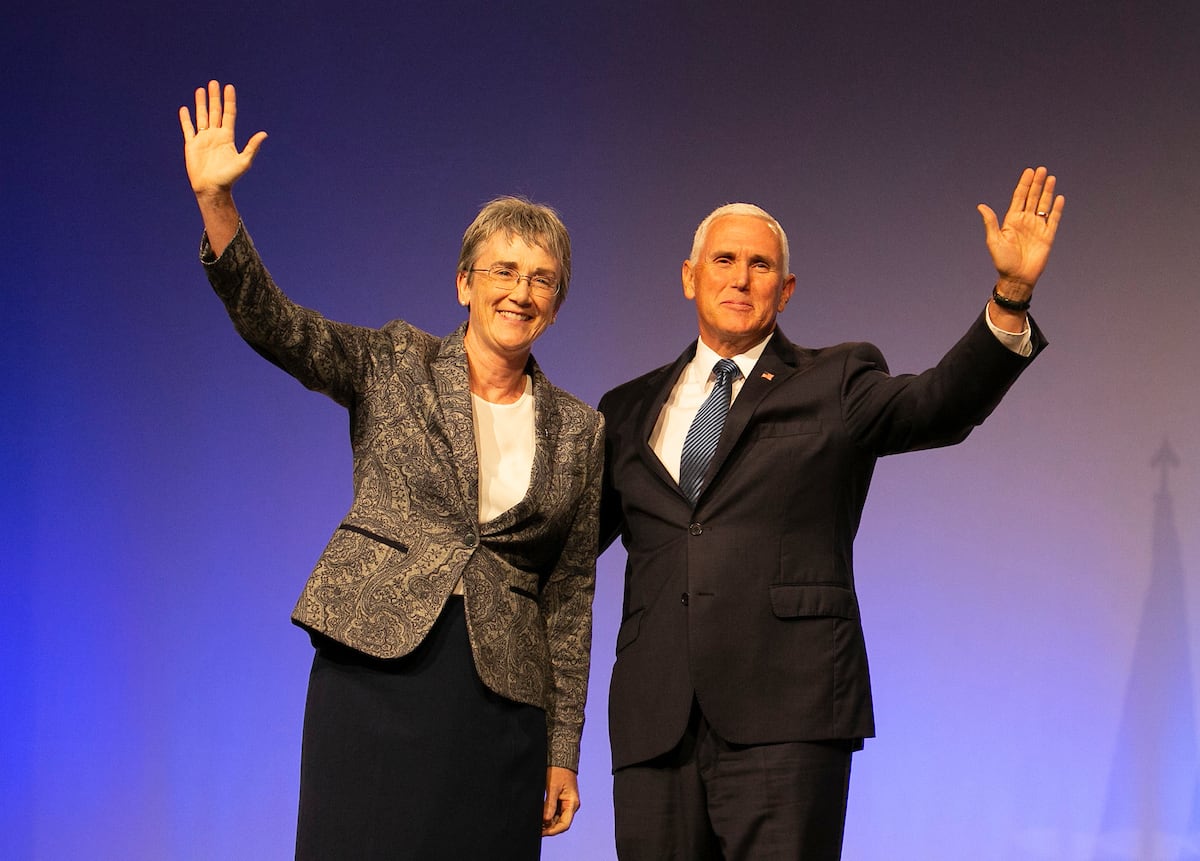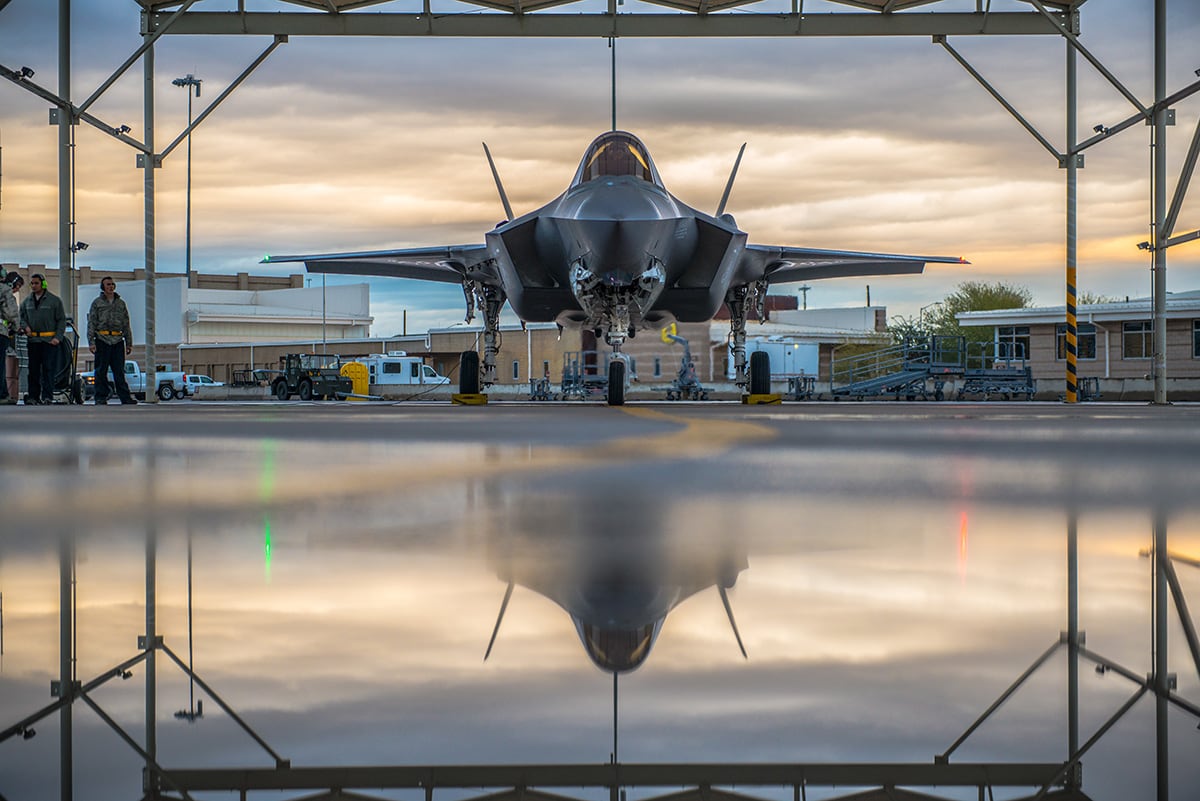WASHINGTON — With Lockheed’s fifth-generation F-35 and Boeing’s fourth-generation F-15X in a dogfight for budget dollars, a bipartisan group of 103 House lawmakers has called on colleagues to add 24 F-35s over President Donald Trump’s 2020 budget request, for a total of 103.
The Joint Strike Fighter Caucus, on Monday, sent a letter to lead House authorizers and defense appropriators, following an Air Force budget request that proposed buying F-15s after a 20-year hiatus while holding the F-35A buy-rate flat.
Caucus leaders sent the letter arguing their proposed production hike would reduce overall F-35 costs and ensure air dominance as, “adversaries continue to advance surface-to-air missile systems and develop their own stealth fighters.”
“In fact, as global threats continue to rise, the Department of Defense’s (DoD) Fiscal Year 2020 budget request, which includes funding for 78 F-35s (48 F-35As, 10 F-35Bs and 20 F-35Cs) – 15 less than Congress appropriated in Fiscal Year 2019 – leaves the Air Force, Navy and Marine Corps with a capability gap that 4th Generation, or legacy, aircraft cannot fulfill,” the letter argues.
“To reach the minimum 50% ratio of 5th Generation and 4th Generation fighters in the timeframe required to meet the threat, the U.S. must acquire F-35s in much larger quantities,” they wrote, adding later: “F-35 modernization is crucial for 4th generation aircraft systems, which are increasingly vulnerable and reliant on 5th generation production.”
RELATED

The leaders of the caucus and the letter are Rep. John Larson, D-Conn.; Martha Roby, R-Ala.; Marc A. Veasey, D-Texas, and Mike Turner, R-Ohio.
They propose adding 12 F-35As for 60 total — which mirrors the Air Force’s annual unfunded priorities list — but also, 12 F-35Bs for 22 total. It does not add to the request for 20 F-35Cs.
The effort comes as both chambers of Congress prepare the annual process of drafting their authorization and appropriations bills, which typically extends beyond the summer. Such internal lobbying efforts are not unusual, and last year, congressional appropriators added 16 F-35s to the Pentagon’s request.
The recent letter emphasized the F-35’s lethality, its overseas deployments, its growing ubiquity among allies, its falling per-aircraft price tag and its impact on the American economy — “by supporting more than 1,500 suppliers and more than 194,000 direct and indirect jobs across the country.”
The lawmakers said that an unspecified increase in funding would help the F-35 get in line with a Pentagon mandate that 80 percent of key tactical aircraft be mission capable. It would pay for, “spare parts and depot level repair capability to meet the required availability rates and accelerate the stand-up repair process of mandated organic government repair capabilities.”
While the lawmakers argue for a production ramp up, the government’s F-35 Joint Program Office and Lockheed have said in recent weeks that as production rates have risen, so have manufacturing defects connected to the jet’s unique stealth features. In September, the Pentagon temporarily halted F-35 deliveries to correct production errors.
RELATED

The Pentagon, meanwhile, has also pressed Lockheed to lower costs more rapidly.
Lockheed Martin chief executive Marillyn Hewson, earlier this year, defended her company’s progress toward getting the unit cost down to $80 million. Its price dropped below $90 million for the first time last year as the company has been producing the planes at a faster rate.
The decision to include eight F-15Xs in the Pentagon’s 2020 request is expected to feature prominently as Air Force officials appear for Capitol Hill budget hearings this week. Air Force Secretary Heather Wilson has said the service did not initially seek the F-15Xs.
Pentagon officials have said the decision, driven by the Cost Assessment and Program Evaluation office, was in part meant to maintain a robust defense-industrial base, and they have discounted reports that acting Defense Secretary Patrick Shanahan, a former Boeing executive, influenced the process.
Note: An earlier version of this story reflected the number of signatures before the letter’s final version was sent.
Joe Gould was the senior Pentagon reporter for Defense News, covering the intersection of national security policy, politics and the defense industry. He had previously served as Congress reporter.








